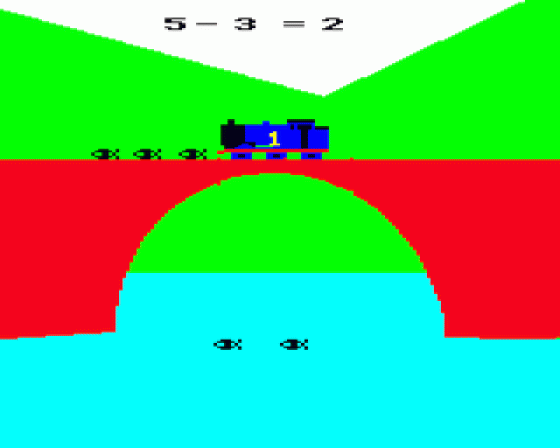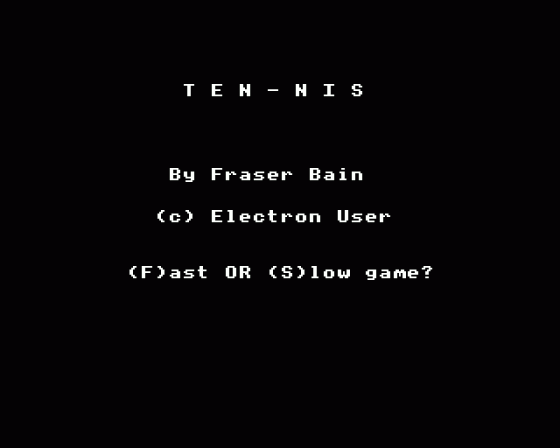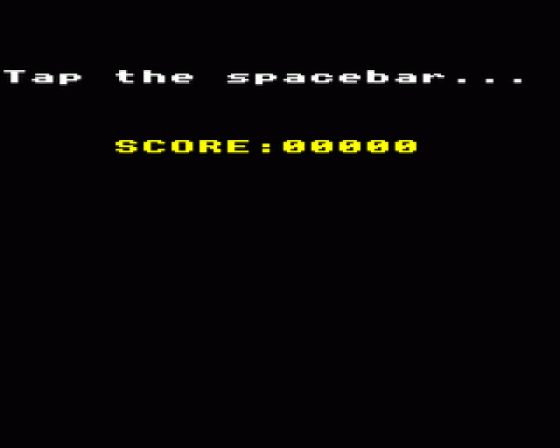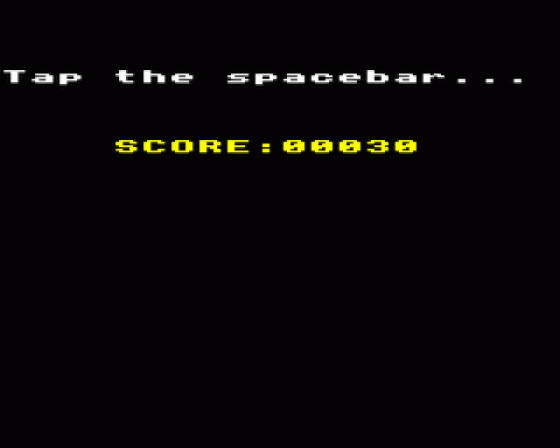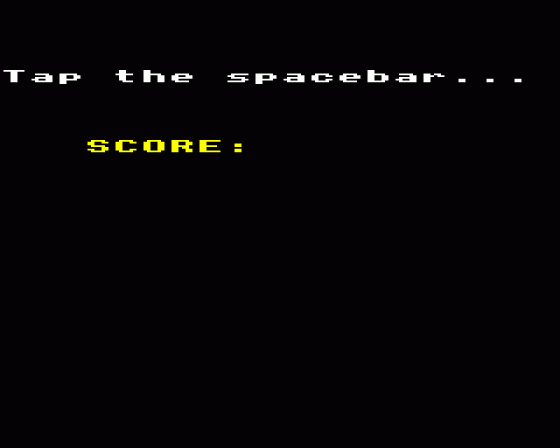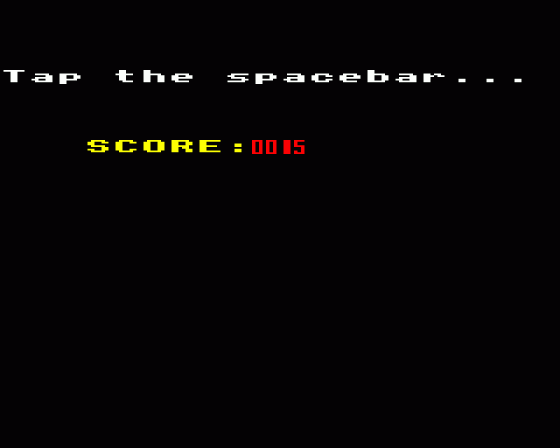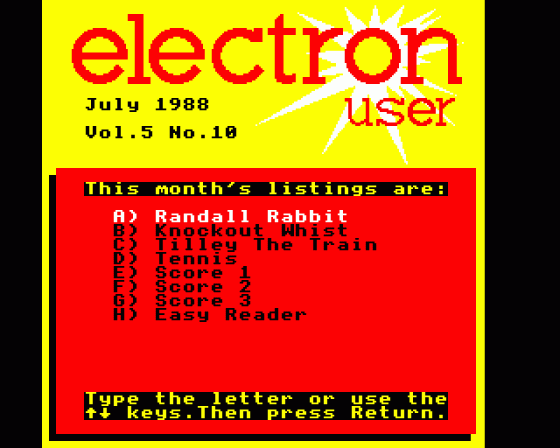
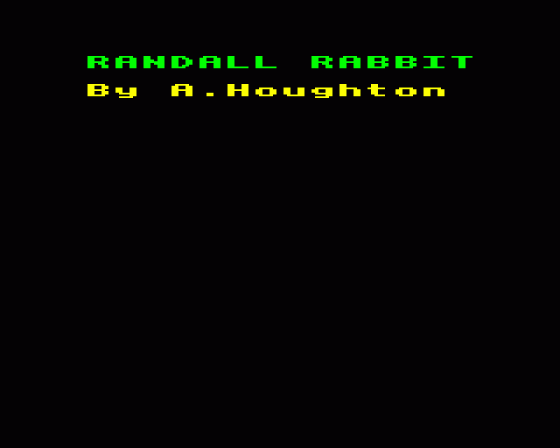
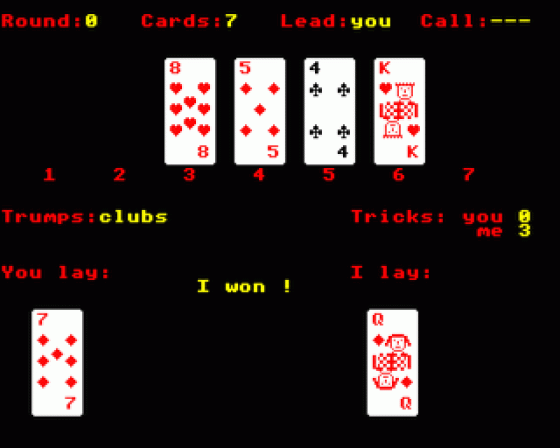
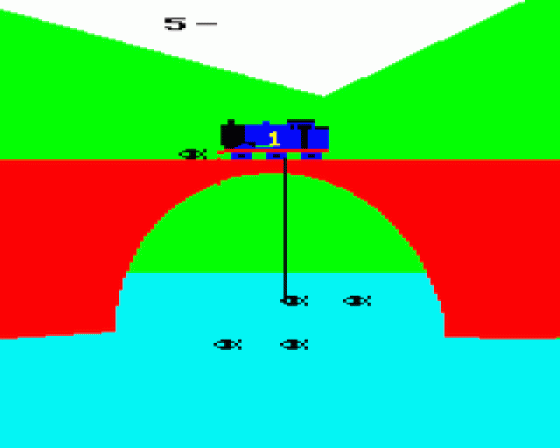
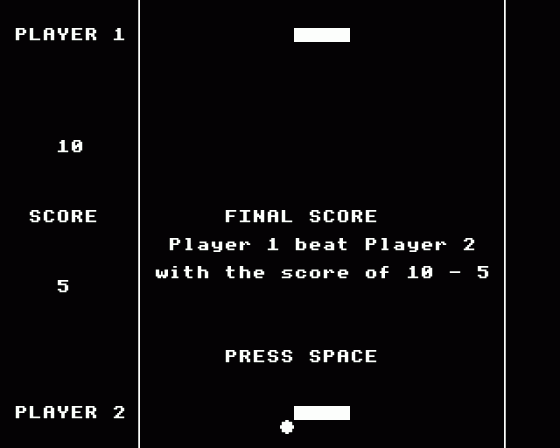

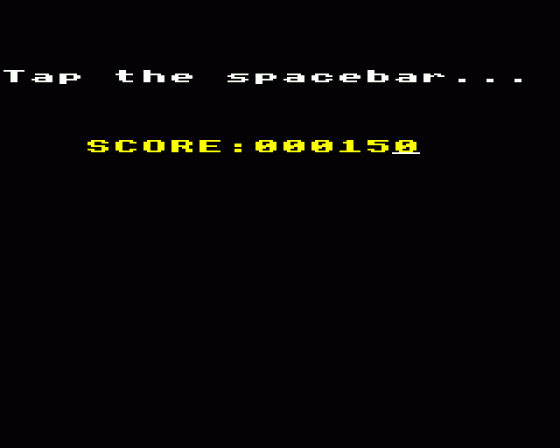
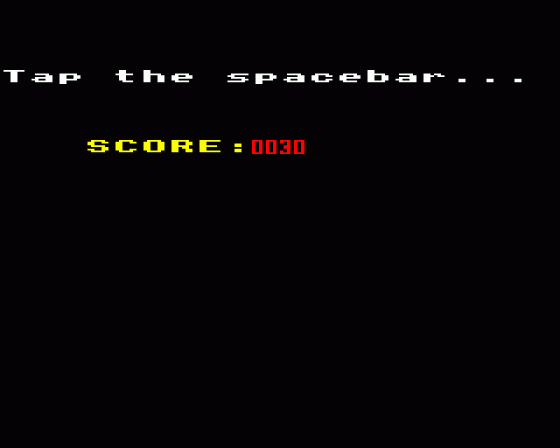

| Genre: | Compilation Of Arcade Games |
| Publisher: | Database |
| Contents: | |
| See Also: | The programs on this Cassette were supplied in type-in format in the magazine Electron User 5.10. |
| Cover Art Language: | English |
| Machine Compatibility: | Acorn Electron |
| Release: | on Cassette |
| Compatible Emulators: | Elkulator 1.0 (PC (Windows)) |
| Original Release Date: | 1st July 1988 |
| Original Release Price: | Unknown |
| Market Valuation: | £2.50 (How Is This Calculated?) |
| Item Weight: | 64g |
| Box Type: | Cassette Single Plastic Clear |
Variant Items
There are 0 other items featuring this same game (that we know about!). Click any of them for their details.
Active Auctions
Closed Auctions
Buy It
Unfortunately no-one is currently selling this item.
Auction Price Watch
Worried you're being ripped off? Closing prices on eBay can help you decide what a reasonable price is for a particular item.
Full Instructions
KNOCK-OUT WHIST
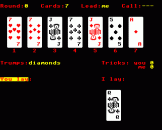 Beat the computer's hand in this full-blown whist simulation from Robert Charlton
Beat the computer's hand in this full-blown whist simulation from Robert Charlton
Whist is a two-player version of the popular card game KNOCK-OUT WHIST in which the Electron takes on the role of the other player. Even if you already know the rules, read on - there are a variety of ways to play.
This version is played over a total of seven rounds. In round one, seven cards each are dealt, and the game is started by the player whose name is shown next to the word Lead.
A card is played by typing the number shown beneath it, and the opponent has to match this with a higher value card of the same suit to win the trick. Whoever wins a trick becomes the lead for the next go.
| Variables | |
| C% | Number of cards in round |
| D% | Number of tricks you have |
| E% | Number of computer's tricks |
| F% | The "lead" player |
| P% | Practice round flag |
| R% | Current round |
| T% | Trump suite |
| W% | Winner of the round |
| D$() | The deck of cards |
| H$() | Holds both hands |
|
Procedures |
|
| shuf | Shuffles the pack |
| huma | Gets player's card |
| comp | Gets computer's card |
| deal | Deals random cards |
| disp | Prints the screen |
| draw | Draws a card |
| admn | Decides the winner |
| cut | Cuts the pack |
If the opponent has no card of the same suit, then two choices are possible. Any other card may be laid down, in which case the opponent automatically wins that trick.
But if the card is a member of the current trump suit - indicated at the middle left of the screen - then whoever placed the trump automatically wins that trick, unless it was placed first and the opponent counters with a higher trump.
The player beginning a round has the choice of trumps for that round - the computer will decide for itself, and will tell you its choice. When it is your turn to choose trumps, simple press the first letter of the desired suit. Full prompts are given and your choice is then displayed.
The winner of each round is the player with the most tricks. If both players have an equal number, the pack is cut at random as a tie-break, the higher card deciding the winner.
After the first round, if a player completes any subsequent round without scoring, then the whole game is automatically given to the other player. But note than no one can lose in round one, which is essentially a practice round.
The winner of the game, unless won by default, is the player who has won the most rounds. The computer plays quite intelligently, but if you think carefully - and luck is on your side - you should be able to at least draw most of the time.
Some Useful Hints
- When laying your first card, it's advisable to place one of higher value
- If you have no trumpts in your hand at all, and do not have a card of the same suit as the computer, lay the lowest value card of any suit that you have - this saves your better cards for the next go.
- Try to save your trump cards - don't use them all up at the start unless it's vital.
- When selecting trumpts, choose the suit which matches the majority of card in your hand.
And finally, remember that Aces count high - that is, more than a King. So fix your eye-shade firmly on your forehead, and settle down to some fast dealing.
RANDALL RABBIT
 Times are hard in Woody Warren. Last month's drought virtually destroyed the local carrot crop, and the small rabbit colony now faces starvation.
Times are hard in Woody Warren. Last month's drought virtually destroyed the local carrot crop, and the small rabbit colony now faces starvation.
And to make things worse, the evil Baron de Bunniford - always one to look out for himself - ordered his hench-rabbits to hoard an immense pile of carrots in his strongrooms as soon as the drought set in.
Desperate times call for desperate measures, so the elder rabbits settled on a plan to recover their vital food stocks.
| Variables | |
| lives | Number of lives left |
| level | Current level |
| round | Number of missions completed |
| vmon | Vertical position of monster |
| hmon | Horizontal position of monster |
| carrots | Number of carrots gathered |
|
Procedures |
|
| assem | Assemble machine code |
| screen | Set up the next level |
| hmon | Set up the horizontal monster positions |
| vmon | Set up the vertical monster positions |
| bonus | Award bonus score |
| won | Get ready for next round |
You, the youngest and fittest in the colony, must breach the Baron's fortified warren and bring back as many carrots as you can carry. But unknown to you, armies of deadly carrot monsters are standing guard over the Baron's illicit hoard, just waiting for a tender young bunny to wander into their clutches.
You can leap from level to level, dodging under or over the carrot monsters to reach your booty, but beware the disintegrating platforms.
If you stand on one for too long it will disappear, plunging you to the warren floor, where the cannibalistic Baron will have you served up as rabbit stew.
Game Controls:
z - Left, X - Right, SHIFT - Jump
TENNIS
That's the question of the day with Fraser Bain's fast two player game
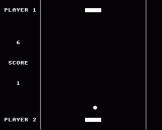 The crowd is wild. Your opponent is sweating. Your racquet seems like a living extension of your arm, and you know that this time nothing is going to get between you and the championship.
The crowd is wild. Your opponent is sweating. Your racquet seems like a living extension of your arm, and you know that this time nothing is going to get between you and the championship.
| Variables | |
| A% | Player one's X coordinate |
| B% | Player two's X coordinate |
| S% | Player one's score |
| T% | Player two's score |
| X% | X coordinate of ball |
| Y% | Y coordinate of ball |
| x% | X direction of ball |
| y% | Y direction of ball |
| b$ | Bats' shape |
| SP% | Game speed |
| p% | Winning player |
Tennis is a two player game based on the popular video tennis games of the late 1970s.
Each player controls a bat, facing the other across the court, and the object is simply to keep the ball in play until your opponent lets it go past.
The winner of a game always serves the next ball, and the champion of the match is the first player to win 10 games - hence the name Tennis.
The ball is always served from the centre of court, travelling toward the loser of the previous game unless a new match has begun, in which case the ball is always served toward the left-hand player. Before each match starts you have the option of a fast or a slow game. The speed difference is not great, but should be enough to suit both players' needs.
TILLEY
Help Tilley get it right with this educational maths game from Ron Hagley
 TILLEY GOES FISHING is an educational game which starts a train, and is a fun introduction to simple subtraction.
TILLEY GOES FISHING is an educational game which starts a train, and is a fun introduction to simple subtraction.
Extensively tested in a classroom situation with normal five, six and seven year olds, and also with children having special educational needs, Tilley utilises the principles of errorless learning - that is, at no time is a child able to enter an incorrect answer.
The scenario is simple: Tilley has gone to catch some fish from the top of her favourite bridge, but she needs some help with working out just how many are left in the water.
| Procedures | |
| title | Draws the title screen |
| Tilley | Prints Tilley |
| dataload | Defines the characters |
| pause | Delay loop |
The child - or children - must follow a simple subtraction process through to its correct conclusion, by making use of both the numeric and graphical display of the sum in progress.
First, the main screen is drawn, with Tilley sitting atop a red bridge. then a random number of fish appear in the river beneath, with a flashing question mark beside them.
This is a prompt to enter the correct number of fish, and at this point it should be noted that all keyboard input is numeric and does not require the use of the RETURN key.
When the child has entered the first number - for 10, the 1 and 0 keys are pressed - that number will appear at the top of the screen, forming the first part of the sum.
Now Tilley will begin to fish, dropping her line into the water one or more times. As each fish is caught, it disappears from the water to be placed in a growing line on the bridge beside Tilley. Therefore the subtraction can be seen in read action, allowing for a much better grasp of what is happening.
When Tilley has finished, another flashing question mark will appear, this time expecting for an answer the number of fish that were caught.
When the right answer has been entered, it will appear at the top of the screen after the first number. The two are separated by a minus sign, and an equals sign follows the second number.
Now the sum has been displayed, a third question mark will appear, prompting for the answer to the whole sum. This can be worked out either numerically, by examining the written sum, or by counting the number of fish left in the water.
There is a reward for getting each sum right, in the form of the rather apt nursery rhyme tune: "One, two, three four five, once I caught a fish alive...". The sum - and all the fish - will then disappear, and the water will be re-populated ready for the next sum.
The game is fully error-trapped, never generating zero or a negative number of fish, and to avoid needless frustration arising from accidental pressing of the BREAK key it can only be halted by pressing CTRL-BREAK.
Screen Designers
The following utilities are also available to allow you to edit the supplied screens of this game:
Cheats
Download
A digital version of this item can be downloaded right here at Everygamegoing (All our downloads are in .zip format).
| Download | What It Contains |
|---|---|
| A digital version of Electron User 5.10 suitable for Elkulator 1.0 (PC (Windows)) | |
| A digital version of Electron User 5.10 suitable for Elkulator 1.0 (PC (Windows)) |
Report A Problem
We thank you from the bottom of our hearts if you report something wrong on our site. It's the only way we can fix any problems!
You are not currently logged in so your report will be anonymous.
Add Note
Release Country
Change the country to update it. Click outside of this pop-up to cancel.
Scan Of Selected Article
If you auction an item, it will no longer show in the regular shop section of the site.












